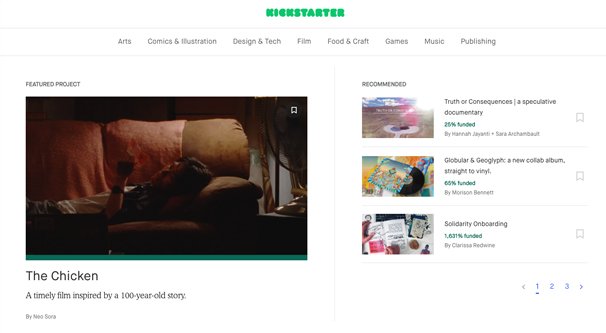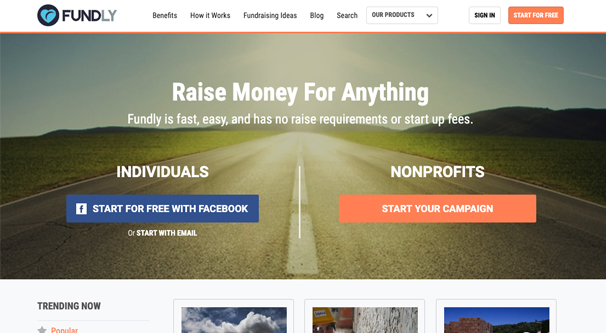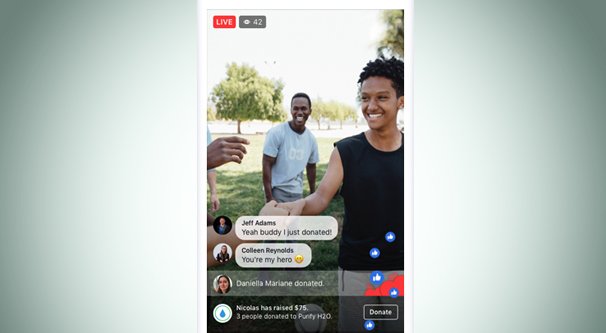For as long as there have been crowds of people, there have been fundraisers. You or your organization want something that is expensive, too expensive to do on your own, so you turn to your supporters, to the crowds. “Give us money,” you say, “so that we might produce marvels.”
Sometimes, they do. They fund your project, and you produce, whether it’s a new product for market, or a refurbished building, or research to cure disease.
Sometimes, they don’t. You project lingers unfunded, underfunded, unable to progress or progressing too slowly. They use this as justification; see, look! It wouldn’t have happened anyway.
Sometimes, even rarely, you cut and run. For as long as there has been fundraising, there has been scamming. From the days of yore to Kickstarter, people raise money on promises, and leave, those promises unfulfilled.
I trust you. I know you aren’t going to run a scam with the advice I give you. If you would like to run a fundraiser, and you would like that fundraiser to be successful, you should turn to social media.
Social media. Facebook, Twitter, Instagram; the largest crowds of all. Appealing to these crowds, with the backing of your supporters and the potential for viral popularity, is the surest way to raise funds for anything. Here are fifteen tips on how to do it.
1. Use Facebook’s Donation Integration
Facebook has a built-in system where you can set up a fundraiser. You can link it to a nonprofit organization within their database and affiliate network, or you can raise money for a custom cause with donations leading directly into your bank account. These fundraisers can be for anything from the Prevent Cancer Foundation to your dog’s surgery to fundraising for a trip or a wedding.
By doing this through Facebook’s system, you can take advantage of built-in Facebook sharing and exposure, as well as customized calls to action. Friends can donate directly through Facebook, or they can reach out to you to donate in other ways.
The downside to this method is that it sort of locks your fundraiser to Facebook. When running a fundraiser through another platform or an independent accounting, you can show progress from all donation sources. With Facebook, their meter only counts donations through their platform, so you would have to keep a running total elsewhere.
2. Produce Merchandise to Sell
One sad fact of life is that fundraisers don’t necessarily encourage people to donate when they don’t get anything out of the deal. That’s why things like Kickstarter have stretch goals and a product at the end of the day. That’s why so many charities sell merchandise, ranging from stickers to pins and buttons to shirts and hats.
Luckily, there are hundreds of different services out there that will print objects on demand, like any of those above pieces of merchandise. All you need is the design that will be printed, and the money to commission the printing.
The goal here is to print items that you can then sell for a higher price than the cost, and the profits go to the fundraiser. If you can get a shirt printed for $5 and sell it for $15, $10 of every sale goes to the fundraiser and you’re going to attract plenty of attention.
3. Hold Raffles with Prizes for Donations
Every year, the Games Done Quick organization holds a week long charity marathon, typically for either the Prevent Cancer Foundation or for Doctors Without Borders. Throughout their marathon, they have a variety of incentives for reaching donation goals.
One such set of incentives is donation prizes. Various people involved in the organization donate items, such as artwork, sculptures, video games, and plush characters, to be given away to donators. Each item has a donation minimum, and when a person reaches that minimum donation, they are entered to win the item.
You can do something similar. Produce items of value that your followers want, and allow users to donate to acquire raffle tickets or an entry to win. Donations, of course, go to the fundraiser.
4. Use Kickstarter for a Product-Based Fundraiser
Not all fundraisers are appropriate for specific venues. Kickstarter is a venue where you can run a fundraiser with a specific product or project as the end goal. You’re not going to be able to run a kickstarter for something like “medical research” because there’s no tangible end goal.
For something like a new model of phone, a unique kind of water filtration system, or a video game, you can certainly take advantage of Kickstarter and its features. Features like being able to easily integrate your social profiles and share your fundraiser to your audience.
5. Make Use of Stretch Goals
One such feature for Kickstarter, which has been adopted by a lot of other fundraisers and fundraising systems, is the idea of stretch goals and progress goals. Let’s say your fundraiser has a goal of $100,000. You can set thresholds at $1,000, $5,000, $10,000, $25,000, and so on, all the way up to your $100,000 goal. These minor goals allow users to know what you’re structuring your budget to spend it on, and they know that even if they don’t reach the goal, they might still be doing some good.
You continue to add goals above and beyond your final goal as well. $150,000, $200,000, and so on, can all be goals to encourage above and beyond contributions. If you’re wildly successful, what benefits can you bring to the table? Letting supporters strive to reach those goals can be a great way to encourage more donations.
6. Use Other Platforms for Relevant Fundraisers
Kickstarter only works for product-based fundraisers, so you will want to use a different platform for other kinds of fund drives. Fundly, IndieGoGo, Edco, Bonfire, Crowdfunder, and others are all viable options for specific kinds of fundraisers.
There are plenty of options, so be sure to research your choices. Make sure that if the platform takes a fee, you know what it is and work it into your budget and fundraising goal. Generally, be as transparent as possible and encourage people to donate through any channel they have available to them.
7. Take Advantage of Local Connections
If you’re a local individual, a small business, or even a regional business, you can capitalize on your location to make connections with local organizations and businesses. Many small businesses like to support each other, and at the very least, they can help promote your fundraiser on their own social media pages.
8. Partner with Businesses for Donation Matching
Reach out to large businesses with your fundraiser. A lot of brands, rich entrepreneurs, charitable organizations, and other high-money groups will love to donate to fundraisers, particularly if they can get a tax write-off to do so. Ask them to donate, but more importantly, ask them if they’d be willing to partner with you for a donation matching incentive.
The way these incentives work is that the company promises X amount of money in matched donations. Let’s say you link up with Apple and they say that they will match the total amount of money donated to you in the next five hours, up to a total of $100,000. This encourages people to donate, because they’re donating twice the money they would otherwise, through matching.
This is also an excellent way to get social media involved; these companies can promote their donation matching incentive to their audiences as well.
9. Take Your Fundraiser Live
Live streaming is becoming more and more popular with every passing year. Twitch and Mixer are both immense businesses, owned by Amazon and Microsoft respectively, and they have millions upon millions of viewers every day.
There are three ways you can take advantage of a live stream for your fundraiser.
- Create an organization people can link to and promote on their streams to raise money for you. Extra Life is one of the biggest examples.
- Partner with individual streamers, preferably larger streamers as they draw in more money, and get them to run a stream where profits from subscriptions, donations, and other tips go to your organization. Be there to participate with them, if possible.
- Simply run a stream of your own. Small organizations won’t likely get much following without a gimmick, but larger fundraisers might be able to promote themselves into the front pages and high viewer counts.
10. Use Live Video to Showcase Progress
You aren’t limited to livestreaming sites if you want to use live video. Producing a live video is easy; simply configure streaming through Facebook, Instagram, or YouTube. You can broadcast a stream from a phone with only a few clicks and taps, and you can use these live updates to showcase just how well your fundraiser has been doing. These videos can be engaging and users can even donated during them for special shout-outs and acknowledgements.
11. Make Heavy Use of Twitter
Twitter might have a few faults – okay, actually, a lot of faults, that they keep compounding – but they have one thing right: they are the single best social media platform in the world for time-sensitive updates. Since their display is largely chronological, it’s easy to keep a feed going with progress updates on everything from progression towards fundraising goals to donation matching to partnerships and beyond.
If you’re only going to use one social network for your fundraiser, well, Twitter might be a mistake. Only using one social network is a mistake, though, so don’t do it. If you’re only going to use one social network for your fundraiser, rethink that plan.
12. Consider Spending on Facebook Ads
Facebook ads can be some of the cheapest ads out of any platform that still get results. They can be hyper-targeted to very narrow audiences that still have thousands of people in them. By running ads promoting your fundraiser, you can reach the people most likely to donate to you.
The kicker here is two-fold. First, you need to make sure that you’re good enough with Facebook ads and know enough about your audience to reach them effectively. If you’re not effective, you might end up spending more money running the ads than the ads bring in.
The other caveat is that you need to pay close attention to your audience insights to get to know your audience. It’s one thing to know in broad strokes that your fundraiser will primarily reach young women, but with Insights you can learn even more demographics and reach them even more accurately.
13. Develop a Unique Angle
If you remember from a few years back, an event went viral called the Ice Bucket Challenge. This challenge was part of an awareness campaign for the ALS Association, and raised funds for study into the disease. While it might not seem like dumping some water on your head is going to help too much, the viral nature of the “challenge” meant millions of people were aware of the fundraiser that otherwise wouldn’t. That awareness translated into over $115 million dollars in donations and significant strides in research. You may not be able to replicate this extreme level of success, but finding a unique angle to try is worth a shot.
14. Don’t Forget to Engage
A huge part of running a successful fundraiser is making sure your audience knows that there’s real people, real content, real goals behind the fundraising. You want to maintain a presence anywhere you can; on Twitter, on Facebook, on Twitch, on any platform you choose to use. Be open, be transparent, and keep in contact with your donors. If there’s any bump in the road, be open about it, particularly when it comes to merchandise. Always be open and chat with people who are interested to learn more.
15. Put Yourself on the Line
The ice bucket challenge worked because everyone was willing to do it, but most importantly, because the people involved did it first. You can’t set up a challenge for others and watch success roll in. You need to be on the front lines, involved as heavily as possible, to raise your funds. Otherwise, it just looks bad.










